AR scopes are readily accessible, and for whatever your need is, chances are there’s a suitable, affordable, and quality optic for you
What You Need To Know
- ✔
AR15 Scopes range heavily in price - ✔
AR15 Scopes offer a wide array of function - ✔
Ensure you buy scopes from verified vendors
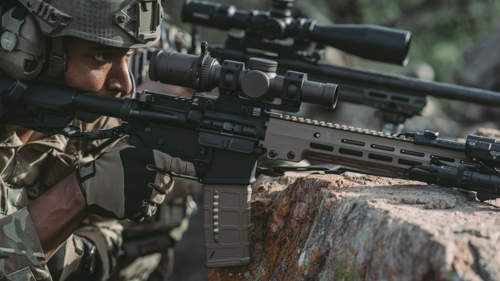
One of my friends, a fellow gun enthusiast, once told me that the AR-15 is like a Barbie for men. The endless amount of accessories, modifications, barrel lengths, and furniture makes his comparison pretty spot on. Many of the changes folks make to their ARs are aesthetic and don’t really improve much. However, a few modifications, such as with the trigger, barrel, and optics can drastically increase the capability of the AR-platform. Red dots once ruled the shooting world. Improved technology has given us the ability to have powered optics that enable long-distance engagement and positive identification of our targets further downrange.
How we Rate our Scopes
There are a dozen different categories we can use to compare different AR scopes. Weight, maximum magnification, glass quality, eye relief, etc. For our uses, we’ll stick to a more pragmatic and practical approach using just three criteria.
Reliability
The most important question is: does it work when you need it to? Your gear needs to stand up to whatever your intended purpose is. All your tools should work when it counts, whether for competition or when your life depends on it.
Price
Is it affordable? Like everything, magnified optics for your AR can be very cheap or extremely expensive, sometimes doubling or tripling the cost of your AR. Generally, you get what you pay for, and quality isn’t cheap, but a few scopes on this list will offer you excellent quality for a lower price.
Accuracy
Is it consistent under the conditions you want to use it? After all, the primary purpose of mounting a scope on an AR is to increase your accuracy by giving you a precise aiming point. Your scope adjustment dials and reticle need to be predictable and repeatable to maximize your accuracy potential.
AR-15 Scopes
AR scopes are readily accessible, and for whatever your need is, chances are there’s a suitable, affordable, and quality optic for you. I’m a true believer in the utility of a magnified optic for an AR, particularly for a 5.56mm that can reach out to hit a man-sized target at 600m. Maybe you want to hunt with your 300 Blackout or shoot in a Camp Perry match. Perhaps you enjoy 3-gun competitions, or maybe you need an optic on your AR (or M4A1) for work. No matter the use, there’s a magnified optic for you.
Our Top Rated Long Range Scopes
According to the US Army’s manual for the M16 rifle and M4 carbine (TC 3-22-9), the maximum effective range to engage a point target using 5.56mm ammunition is 600m. Training, match ammunition, and quality optics can help us actually push the envelope past 600m. That’s not to say you should believe everyone on the internet claiming, “I can get first-round hits out to 1000m using steel 55 grain Wolf ammo in high winds.” You can definitely get hits at 1000 yards, just ask competitors in the Civilian Marksmanship Program Highpower Rifle matches. They do it with optics of no greater than 4.5 power magnification! Long-range optics need good, clear glass, a large objective lens, precise reticle, and high magnification. These will be the most expensive type of scope, but also offer (obviously) the most magnification and clarity at distance.
As a disclaimer, I’m an active duty special operations soldier. I compete on the side and personally own several of the mentioned optics. However, I am not sponsored, and I have no conflict of interest championing or downplaying any of these products.
I used Optics Planet as a pricing standard for everything I could as it’s an excellent company with a wide selection.
Leupold Mark 6 3-18x 44
- Length: 11.9”
- Tube Diameter: 34mm
- Weight: 23.6 oz
- Eye Relief: 3.9”
- Linear Field of View (FOV) at 100yds: 6.3 – 36.8ft (high mag to low mag)
- Reticle Options: Horus-59, MIL-DOT, TMR (illuminated)
- First Focal Plane
Pros
– The H-59 reticle allows the shooter to make distance calls and adjust on the fly without having to mess with the dials
– Relatively compact and light for a scope of this magnification range
Cons
– A bit cloudy at the edges at 18x
– Relatively smaller objective lens means a smaller field of view and light gathering capability
Price: $2499.99
Vortex Razor HD Gen II 3-18x 50
Length: 14.4”
- Tube Diameter: 34mm
- Weight: 46.5 oz
- Eye Relief: 3.7”
- Linear FOV at 100yds: 6.25 – 37.8 ft (high mag to low mag)
- Reticle Options: MRAD, MOA (illuminated)
- First Focal Plane
Pros
– Great value. The price point is low enough to be within reach, but the glass quality is very competitive with premier optics.
– Vortex warranty is unlimited and unparalleled.
Cons
-Size and weight. This thing is an absolute tank.
– Limited reticle options make it less precise to make wind holds at longer distances.
Price: $1699.00
Bushnell Elite Tactical HDMR II 3.5-21x 50
- Length: 13.2”
- Tube Diameter: 34mm
- Weight: 34 oz
- Eye Relief: 3.74”
- Linear FOV at 100yds: 5.1 – 25.3 ft (high mag to low mag)
- Reticle Options: Horus H-59
- First Focal Plane
Pros
– Best value, hands down. If you’re patient, you can find this optic for right around $1000. Many competitors in the Precision Rifle Series gave up sponsorships from top-notch optics manufacturers to use the Bushnell Elite series.
– H-59 reticle at a fraction of the price when compared to the Leupold models
– Locking turrets
Cons
– Parallax adjustment is not great for anything inside of 75 yards
– Relatively narrow field of view
Price: $1299.00
Our Top Rated Variable Magnification Scopes
In my opinion, both as a special operator and as a competitive shooter, the Low Power Variable Optics (LPVOs) are the best all-around optics for the AR-15 platform. Good LPVOs allow you to tailor your magnification needs to specific situations. Perhaps you’re running and gunning at close range, so you keep it on 1x. The next minute you need to observe something out of range, so you flip it to 6x. Battery life is a concern, as you can’t get an illuminated reticle on 24/7 like you can with many non-magnified red dots. This doesn’t mean you can’t still make engagements with no illumination.
Vortex Razor HD Gen II-E 1-6x 24
- Length: 10.1”
- Tube Diameter: 30mm
- Weight: 21.5 oz
- Eye Relief: 4”
- Linear FOV at 100yds: 20.5- 115.2 ft (high mag to low mag)
- Reticle Options: MRAD, MOA, JM-1 (illuminated)
- Second Focal Plane
Pros
– A vast field of view. This is the scope I think about when I describe edge to edge clarity.
– The reticle is extremely clear, usable, and genuinely bright enough to see in all conditions (when you turn the illumination setting on).
Cons
– It’s heavy for what it is. Vortex made it a tad lighter with the new E models, but it’s still a big heavy optic for an LPVO.
– The reticles do not have any windage markings on them. Not necessarily a deal-breaker, but having mil markings on the horizontal stadia make it much easier to engage moving targets or adjust for high winds.
Price: $1399.00
Leupold VX-R Patrol 1.25-4x 20
- Length: 9.4”
- Tube Diameter: 30mm
- Weight: 11.5 oz
- Eye Relief: 3.7-4.1”
- Linear FOV at 100yds: 29 – 75 ft (high mag to low mag)
- Reticle Options: FireDot SPR (illuminated)
- Second Focal Plane
Pros
– Very compact and lightweight. This is an excellent and affordable optic with a lot of utility.
– The FireDot SPR reticle is simple and easy to use, so long as you understand where your holds are. The outer circle draws your eye in and can allow for quick engagements at close range, similar to an EOTech.
Cons
– I hate to ding Leupold for their honesty (since all claim a true 1x but few are a REAL 1x), but it’s not a true 1x on the low end. I competed with a 1.5-5x, and it’s perfectly usable.
– The illuminated reticle is somewhat awkward in daylight conditions in that the illuminated portion bleeds and is splotchy on a bright day.
Price: $569.99
Nightforce NX8 1-8x 24
- Length: 8.75”
- Tube Diameter: 30mm
- Weight: 17 oz
- Eye Relief: 3.75”
- Linear FOV at 100yds: 13.2 – 106 ft (high mag to low mag)
- Reticle Options: F1 with MIL or MOA adjustments (illuminated)
- First Focal Plane
Pros
– Extremely compact and lightweight with a lot of high-end magnification.
– The illumination is bright, and the magnification adjustment is effortless and fast with the included throw lever.
– This is what I currently use at work on my URGI for what it’s worth. It’s great.
Cons
– The eyepiece adjustment comes loose easily. If you rotate the optic body and the eyepiece towards each other in a snapping motion, it locks up better. That method, however, doesn’t allow for precise eye relief adjustments.
Price: $1750.00
Our Top Rated Fixed Magnification Scopes
Fixed magnification optics are much simpler than the variable variety. This means you don’t need to worry about stiff adjustment rings and you can save some weight with the amount of glass within the scope body itself. You can also, generally speaking, get decent magnification at a fraction of the price of the variable magnification counterparts.
Trijicon ACOG 4×32 TA-31
- Length: 5.8”
- Objective Diameter: 32mm
- Weight: 9.9 oz
- Eye Relief: 1.5”
- Linear FOV at 100yds:36..8 ft
- Reticle Options: 223 BDC: Doughnut, Chevron, Horseshoe, Triangle, Crosshair (all illuminated)
Pros
– The most durable and versatile optic I have ever used. There’s a built-in mounting system for a Trijicon RMR if you need a close engagement option.
– Powered by a fiber optic means you won’t need to keep batteries in your range bag or in your kit.
– The reticle options are fantastic, as you can find one in MILs or a BDC for 300 Blackout and 5.56.
Cons
– The eye relief is rough, to the point that you need it as far back on an AR15 upper receiver as possible.
– If you choose a BDC reticle, it will limit your options with different platforms and bullet weights.
Price: $999.00 (depending on model)
SWFA SS 10x42mm
- Length: 14.2”
- Tube Diameter: 30mm
- Weight: 18.7 oz
- Eye Relief: 3.9”
- Linear FOV at 100yds: 12.75 ft
- Reticle Options: MIL or MOA
Pros
– An affordable price tag for a scope with decent glass quality.
– Versatility is great. You can use this for tactical applications, target shooting, competitions, or hunting.
– SWFA is fantastic to work with if anything malfunctions on your optic.
Cons
– No illumination. Illumination isn’t needed for every situation, but those dusk hog hunts are a lot easier with an illuminated reticle.
Price: $399.95
Leupold FX3 6x 42mm
- Length: 12.2”
- Tube Diameter: 1”
- Weight: 15 oz
- Eye Relief: 4.4”
- Linear FOV at 100yds: 17.3’
- Reticle Options: Wide Duplex
Pros
– Lightweight and affordable with Leupold glass quality.
– Clearer glass than optics 4x the price.
Cons
– Difficult to focus at close range (within 20 yards or so)
Price: $399.99
Our Top Rated Flip-Mounted 3x Magnifiers
Within the last several years, manufacturers introduced flip to side-mounted magnifiers to be used in conjunction with red dot sights. This allowed you to have true 1x and quickly flip your magnifier into action for 3x. When your magnifier isn’t in use, it stays out of the way on your upper receiver. I will tell you from experience that the utility of this depends largely on the red dot you pair with the magnifier. With older Aimpoint T1s, M68s, and Comp M4s this projected a bleeding dot and was not suitable for precise engagements. The EOTech and modern T2s work better with magnifiers. This set up allows you an extra capability that might not always need employment, but you can have magnification if the need arises.
EOTech G33 3x Magnifier
- Length: 3.9”
- Tube Diameter: 1”
- Weight: 11.9 oz
- Eye Relief: 2.2”
- Linear FOV at 100yds: 7.3’
Pros
– The best feature of the G33 is the ability to use the diopter dial for micro-adjustments to keep everything in focus at your desired range.
– The magnifier comes with a reversible mount, so you can flip it to whichever side you prefer when not in use.
Cons
– It’s designed to work with an EOTech holographic sight, so it may require a riser (other than the one included) if you use a high-mounted red dot.
– Extremely narrow field of view.
Price: $579.00 (can be purchased cheaper if you bundle it with an EOTech XPS variant)
Aimpoint 3X-C Magnifier
- Length: 4.1”
- Weight: 7.8 oz
- Eye Relief: 2.2”
- Linear FOV at 100yds: specs not given
Pros
– It’s quite light compared to the G33.
– Aimpoint quality is excellent.
Cons
– Does not come with a mount of any kind, so you must purchase either a fixed, flip to side, or twist off mount. Mounts can be purchased in a bundle from certain retailers.
– The diopter adjustment cannot be made without a tool (flat head screwdriver, spent cartridge rim, et cetera).
Price: $284.00
Primary Arms 3x Magnifier Gen IV
- Weight: 7.9 oz
- Eye Relief: 2.64”
- Linear FOV at 100yds: 37.9’
Pros
– Most economical option
– Best field of view and eye relief
Cons
– Quality is fairly low. Distortion with red dots is fairly common amongst magnifiers anyways, but no worse than in the PA.
– Does not come with a mount, but can be bundled for relatively cheap from most retailers.
Price: $99.00
How to use a Long Range Scope
First, you need a quality set of scope rings or scope mount. These can vary in both rings and one-piece mounts between quick detach and nuts. With the AR platform, you’ll often find that a good one-piece cantilever mount will be perfect. The cantilever mount will help with scope placement and proper eye relief. When mounting your optic, you can use an Arisaka leveling kit or an actual bubble kit. Make sure you get it as level as possible and torque the rings down with the proper pressure. Fix It Sticks are perfect for this, but a torque limiter will work just fine.
Next, you need to zero your optic. For most AR-15 distances, I prefer a 50m zero (for 5.56mm). The US Army only recently moved away from a 25m zero to a 50m zero, and the reason is this: there is a smaller variance at more ranges with a 50-200m zero than a 25-300m zero. If you’re using your optic for a variety of functions and ranges, the 50m zero is the way to go. A lot of hunters use a 100m zero. The bottom line is that if you get a good velocity for the rounds you want to use and plug it into a good ballistic calculator (like Strelok or a Kestrel). You can then make the proper dials and/or holds, depending on your reticle.
Finally, make sure you confirm your zero at different ranges. If you use a 50m zero, your rounds should be pretty close at 200m. However, it’s always good to test and confirm your hits at various ranges. Enjoy your ability to push the limits of your rifle, ammunition, and your own abilities!
Advantages of a Long Range Scope
– Allows target discrimination at long range
– Maximizes capability of your rifle
Disadvantages of a Long Range Scope
– Limits your low range engagement capability
– Adds a significant amount of height and weight to your rifle
Variable vs. Fixed Magnification Scope
A variable or fixed magnification scope refers to the power your scope puts out. Variable means you can there are various magnifications you can switch between. However, with a fixed magnification scope, you get one power setting.
Advantages of a Variable Magnification Scope
– Versatility in magnification and field of view
– In my personal opinion, the best all-around optic for the AR15 platform
Disadvantages of a Variable Magnification Scope
– You will pay for quality, but great value is out there (Vortex, Primary Arms, etc.)
Advantages of a Fixed Magnification Scope
– Inexpensive magnification
– A simple system with few moving parts
Disadvantages of a Fixed Magnification Scope
– Absolutely limited in magnification
– A lot fewer options and manufacturers are available
How to use a Flip-Mounted 3x Magnifier
I prefer to mount my T2 as far forward on the upper receiver without the mount touching the handguard. Then I mount my magnifier behind it, trying to find a good balance between being right behind my T2 and close enough to my eye to make the magnifier usable. I had a G33 at work that didn’t require any additional mounting, but I had it set up to flip to the non-ejection port side for me as a right-handed shooter. This allowed me to employ it when I needed to, but keep it out of the way when not in use.
Advantages of a Flip-Mounted 3x Magnifier
– You have magnification at the ready when you need it, but out of the way when you don’t.
– Increased ability to PID (positively identify) your intended target.
Disadvantages of a Flip-Mounted 3x Magnifier
– When not in use, the magnifier is awkwardly hanging to one side or another off your rifle.
– Precise engagements are more complicated, especially with a bleeding dot.
Leupold Mark V
★★★★★
Learn More
Table of Contents
- What You Need To Know
- Our Top Rated AR-15 Scopes
- How we Rate our Scopes
- Reliability
- Price
- Accuracy
- AR-15 Scopes
- Our Top Rated Long Range Scopes
- Leupold Mark 6 3-18x 44
- Pros
- Cons
- Vortex Razor HD Gen II 3-18x 50
- Pros
- Cons
- Bushnell Elite Tactical HDMR II 3.5-21x 50
- Pros
- Cons
- Our Top Rated Variable Magnification Scopes
- Vortex Razor HD Gen II-E 1-6x 24
- Pros
- Cons
- Leupold VX-R Patrol 1.25-4x 20
- Pros
- Cons
- Nightforce NX8 1-8x 24
- Pros
- Cons
- Our Top Rated Fixed Magnification Scopes
- Trijicon ACOG 4×32 TA-31
- Pros
- Cons
- SWFA SS 10x42mm
- Pros
- Cons
- Leupold FX3 6x 42mm
- Pros
- Cons
- Our Top Rated Flip-Mounted 3x Magnifiers
- EOTech G33 3x Magnifier
- Pros
- Cons
- Aimpoint 3X-C Magnifier
- Pros
- Cons
- Primary Arms 3x Magnifier Gen IV
- Pros
- Cons
- How to use a Long Range Scope
- Advantages of a Long Range Scope
- Disadvantages of a Long Range Scope
- Variable vs. Fixed Magnification Scope
- Advantages of a Variable Magnification Scope
- Disadvantages of a Variable Magnification Scope
- Advantages of a Fixed Magnification Scope
- Disadvantages of a Fixed Magnification Scope
- How to use a Flip-Mounted 3x Magnifier
- Advantages of a Flip-Mounted 3x Magnifier
- Disadvantages of a Flip-Mounted 3x Magnifier
- Leupold Mark V
- Vortex Razon HD II
- Leupold VX R Patrol
Recent Posts
- M4 vs AR15 vs M16: Ultimate 2024 Guide to Differences & Uses
- The Ultimate Guide to M16 Barrel Length: 16” vs. 20”
- M855 vs M193 Face-off: Which 5.56 Round Dominates?
- 22 vs 9mm | Comprehensive Guide on Performance, Uses, and Ballistics
- AK-47 vs AR-15: The Ultimate Comparison and Faxon’s ARAK Hybrid Solution
- The Controversial Glock 18: Legal Status, Challenges, and How to Buy
- The Best SIG P365 Compensator: Elevate Your Shooting Experience with Faxon Firearms
- Shot Placement For Concealed Carry | Stop The Threat
- Hard Head Veterans Unveils American Made HHV ATE® GEN3 Ballistic Helmet
- The Ultimate 350 Legend Q&A: Top 20 Questions Answered






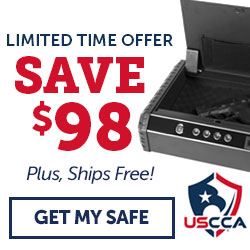

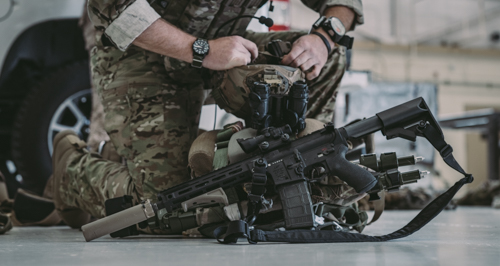
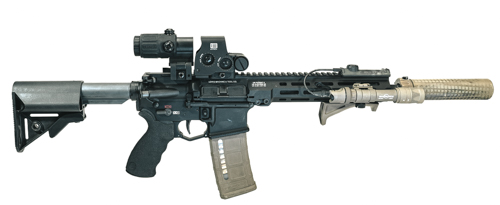

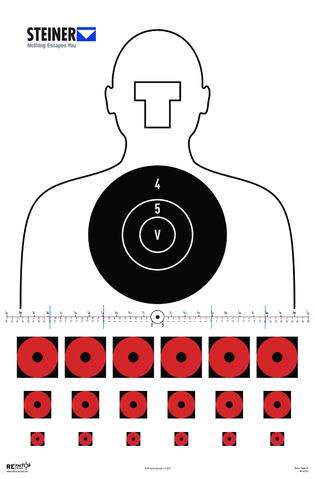
Leave a Reply
Your email address will not be published. Required fields are marked *